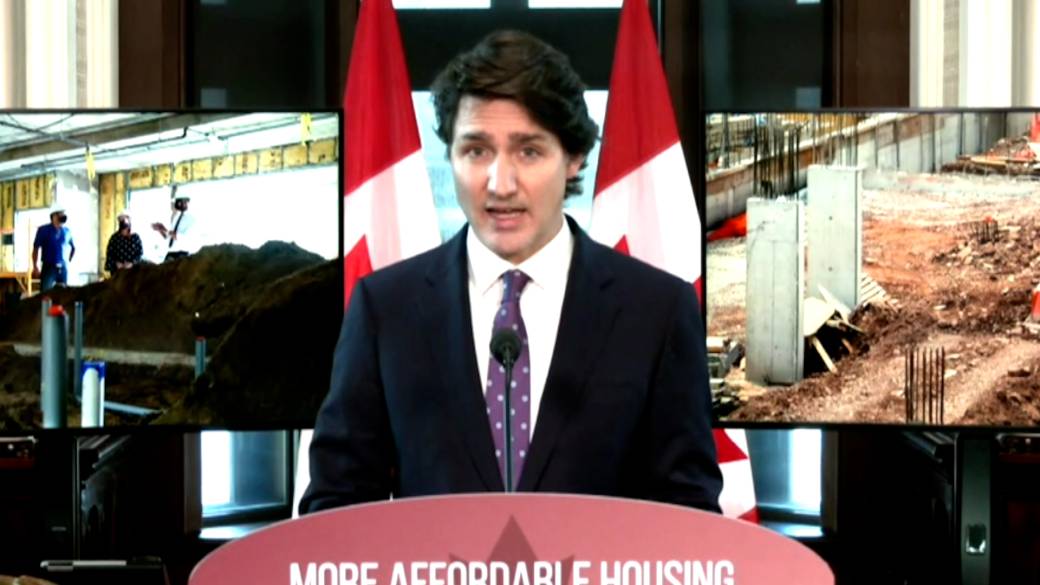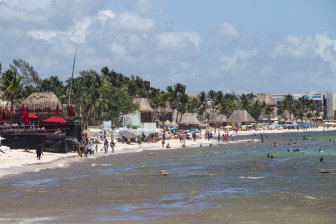Ontario’s Prime Minister Doug Ford will meet Sunday with leaders of rural, remote and northern communities to discuss their housing challenges, as issues of rapid price growth and lack of supply are felt far beyond urban boundaries.
The talks come after the Prime Minister and Minister of Municipal Affairs and Housing, Steve Clark, recently hosted a virtual housing summit with big city mayors. Clark said Sunday’s meeting is an “opportunity to work and coordinate” with smaller, rural, northern and remote municipalities on how the government can address the housing crisis.
Read more:
Premier Doug Ford kicks off housing summit with funding to help municipalities cut red tape
“This could include discussing ways to build the right mix of housing in the right places, sharing best practices and discussing these municipalities’ unique experiences with the housing crisis,” he said in a written statement.
Those working in housing in areas outside of Ontario’s major centers said that while there are common problems across the province, governments seeking solutions need to remember the unique needs and challenges of smaller regions.
Mitchell Twolan, the mayor of Huron-Kinloss in Bruce County, who has also been a realtor for 27 years, said the past two years are the busiest he has ever experienced.
“A lot of the people who come in are from the cities, and they come here for quality of life, and we are still considered fairly affordable, even though the prices of houses have skyrocketed,” he said.
House prices rose 31 percent from December 2020 to December 2021 in Gray Bruce-Owen Sound, according to figures from the Canadian Real Estate Association. This is the same percentage as Toronto.
In many regions it is even higher. Kawartha Lakes, Cambridge and Brantford all grew about 40 per cent, while North Bay saw 42 per cent and the Bancroft area topped the list with a staggering 48 per cent growth in prices year-on-year.
Twolan said he was involved in a property that received 27 bids. Huron-Kinloss has built the most homes in its history in the past year – even during a pandemic – and the new offer still does not meet demand, he said.

“It’s really that what’s happened in the city before is starting to happen in rural Ontario,” he said.
Northumberland County Housing Services Manager Rebecca Carman said their average retail price rose 30 percent in a year to more than $ 825,000, which is unaffordable for most people in the region.
“The challenges have always been there, but there was definitely a light shining on them during the COVID-19 pandemic,” she said.
“What has happened over time is affordability and availability of housing. It has long been considered that urban issue with affordability that is often more achievable in rural communities, and that is just not the case anymore.”
Because housing was more affordable in rural communities, there was less demand for rental units, so very few such homes were built, Carman said. And as house prices rise, homeowners are selling their homes instead of renting them out, she said, which also leaves the community sitting with a very low rent vacancy rate.
Read more:
Hamilton’s share of millions in speeding up housing development approval ‘is not going to hurt’
Some of the provincial measures proposed by Carman provide developers with a financial incentive to build a mix of housing, increase the supply of rental housing and improve the process of directing excess Crown land to municipalities for affordable housing.
Robin Jones, mayor of the town of Westport in eastern Ontario and chairman of the Rural Ontario Municipal Association, said two areas that the province can address are land use planning rules on where rural settlements can be built, and landlord and tenant rules.
“Our issue is, of course, like all other affordable housing. “But let’s be clear, the lack of affordable rental housing in rural Ontario is just as severe,” Jones said.
In very small towns, villages and hamlets, wealthy individuals or developers buy buildings and convert old houses with three or four apartments back into single-family residences, she said.
Henry Wall, the chief administrative officer of the Kenora District Services Board, said one way the province can help accelerate housing development is to limit the ability to appeal housing developments or at least streamline the process.
Municipal councils will often approve a zoning amendment for new housing being built just so they can be challenged and stuck in a lengthy appeal process, he said.
“We are losing development due to appeals being filed, due to NIMBYism (not in my backyard), and this has another very serious implication in especially in northern Ontario, where race very often plays into it,” he said. Wall said.
Wall also noted that it costs more in the north to build houses, and with a shorter construction season, it requires more coordination to get supplies.
Read more:
Premier Doug Ford nominated Ontario as leader of electric vehicles, but did not reinstate rebates
The Association of Ontario Municipalities said in a letter to Clark that the two housing meetings are a good start, but addressing the housing crisis will take joint action.
Some of his proposals include applying inclusive zoning policies to more communities to build more affordable housing, rent-to-own programs, and a public education campaign to combat NIMBYism and promote a diverse mix of housing.
© 2022 The Canadian Press
Reference-globalnews.ca

